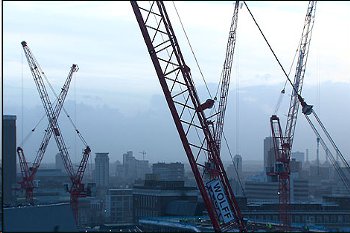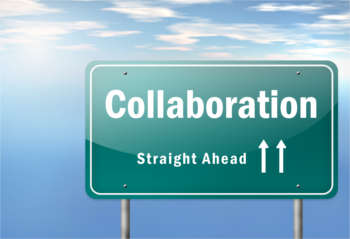Tarmac, in association with Ipsos Mori, recently took the temperature of the infrastructure sector by speaking to 300 key decision makers.
The results were perhaps as surprising in some cases as they were predictable in others. Transport Network spoke to one of Tarmac’s board directors and the managing director of Readymix, Jeremy Greenwood, about where we stand and what we are facing.
Q. What stood out for you in the report?
The focus on the degree of confidence and certainty that the respondents were asking for to enable longer-term planning and investments, particularly in terms of skills and innovation.
Q. Did it surprise you that more people raised concerns about red tape than funding?
The need for certainty and confidence in making investment decisions is the theme running throughout and therefore any cutting of uncertainty, red tape is one example, builds that confidence.

Jeremy Greenwood
Q. Are there any specific examples of cumbersome bureaucracy that the sector wants removed?
I don’t have any specific examples. It’s more about the speed and certainty of the decisions being made. If you look at energy, HS2 and the roads programme, in all those areas the speed at which they are moving forwards and the degree of confidence the industry has on when they will be delivered and their scale, all of that is an uncertainty.
What drives it – whether in roads rail or power – could be 101 different things. The combination of those factors is what produces the uncertainty. Capital transport investment is being doubled this parliament, but there are also more cuts in revenue funding for councils and a 37% cut to the operational budget at the DfT. Do you see that compromising the ability to deliver those capital projects?
There is a combination of bigger and a lot of small local projects and if you look at it from the construction industry’s perspective then both of those avenues need to be invested in. If you put a general business hat on and say “what does Britain need to move forward at this time?” Then I think with the robustness of the infrastructure, there is as much of a challenge on keeping the existing infrastructure running reliably as there is on the bigger ticket new build items.
Q. Are there concerns about the DfT’s oversight of projects, if staff are cut due to this 37% fall in funding?
There are lots of different figures at the moment about head counts and the like. Anything that is not absolute clarity is uncertainty by definition. That’s the challenge the industry has. Until we have firm, funded and committed plans there will always be uncertainty and that always causes delays.
Q. Do you back the idea for a Department for Infrastructure, which was backed by respondents to your poll?
The report shows there is a huge weight of support for this. There is certainly a strong logic that a Department for Infrastructure would be a move in the direction of security. It comes through loud and clear that there is significant support for it so it seems to make sense.
Q. It would be difficult to know where the department began or ended though wouldn’t it? That might create uncertainty.
There is clearly an overlap with many other departments. It’s not for us to speculate on how government would achieve it.
Another thing that comes out of the report that could help is early collaboration. As industry we have been calling for a long time to be involved very early on in the planning phase of infrastructure projects and that collaboration again brings confidence, and innovation, cost saving and some sort of surety in terms of projects being delivered on time and on budget. Again if a Department for Infrastructure can facilitate that early engagement that would be another success.

There is 'strong support' for a Department for Infrastructure
Q. How does the sector stand on collaboration? Has BS 11,000 helped?
I don’t think the BS standard on collaboration in itself has moved the industry forward particularly. I think there are good examples of collaboration on projects with individual customers. In general the early engagement of contractors and their supply chain is not see as often as it should be. I think we have a long way to go on collaboration. The ultimate funders of projects, be they private or public investors, it becomes incumbent on them to involve the supply chain as early as possible.
Q. Is this the same in terms of local and national projects?
Across most projects big and small around the UK, it’s a similar issue. The traditional way of doing things where detailed designs are drawn up in darkened rooms and then at a later stage get shared with the supply chain when most of the decisions have been made, sadly is still prevalent.

The way forward?
Really understanding the innovation that is present in the industry to reduce build time, to increase programme certainty has to be the future. Surely a council can’t engage the industry as a whole for every small project. How would you like this process to take hold in practice?
Our view would be to see it on a more generic basis than an each individual road junction for instance. There are methods that should be explored in general, on a consistent basis. We have surfacing materials now that can be used with much lower maintenance costs much more durability. Low temperatures [asphalt] solutions can be installed in a single layer rather than a double layer. That kind of information should be readily available and be used to design projects at an early stage not on a junction-by-junction basis.
Q. Does this call for collaboration come from a loss of the intelligent client in the public sector?
The two are very closely linked. There are examples that exist today, where knowledge should be in use. But equally there are many examples whereby if a request was made on a problem, it might take industry six months to a year to come up with the solution. So it's not existing knowledge. It’s a case of working earlier in the process to find these solutions. We worked on the Heysham bypass with Costain. We looked at several challenges one of which was to reduce the CO2 impact of the project so we looked at innovative logistics planning to reduce vehicle movement and the knock on effects were much better programme management and therefore programme duration and costs.
Q. Why isn’t there more collaboration?
It’s customer practice. If you look at the procurement models they don’t necessarily lend themselves very well to early collaboration. If we
Register now for full access
Register just once to get unrestricted, real-time coverage of the issues and challenges facing UK transport and highways engineers.
Full website content includes the latest news, exclusive commentary from leading industry figures and detailed topical analysis of the highways, transportation, environment and place-shaping sectors.
Use the link below to register your details for full, free access.
Already a registered? Login